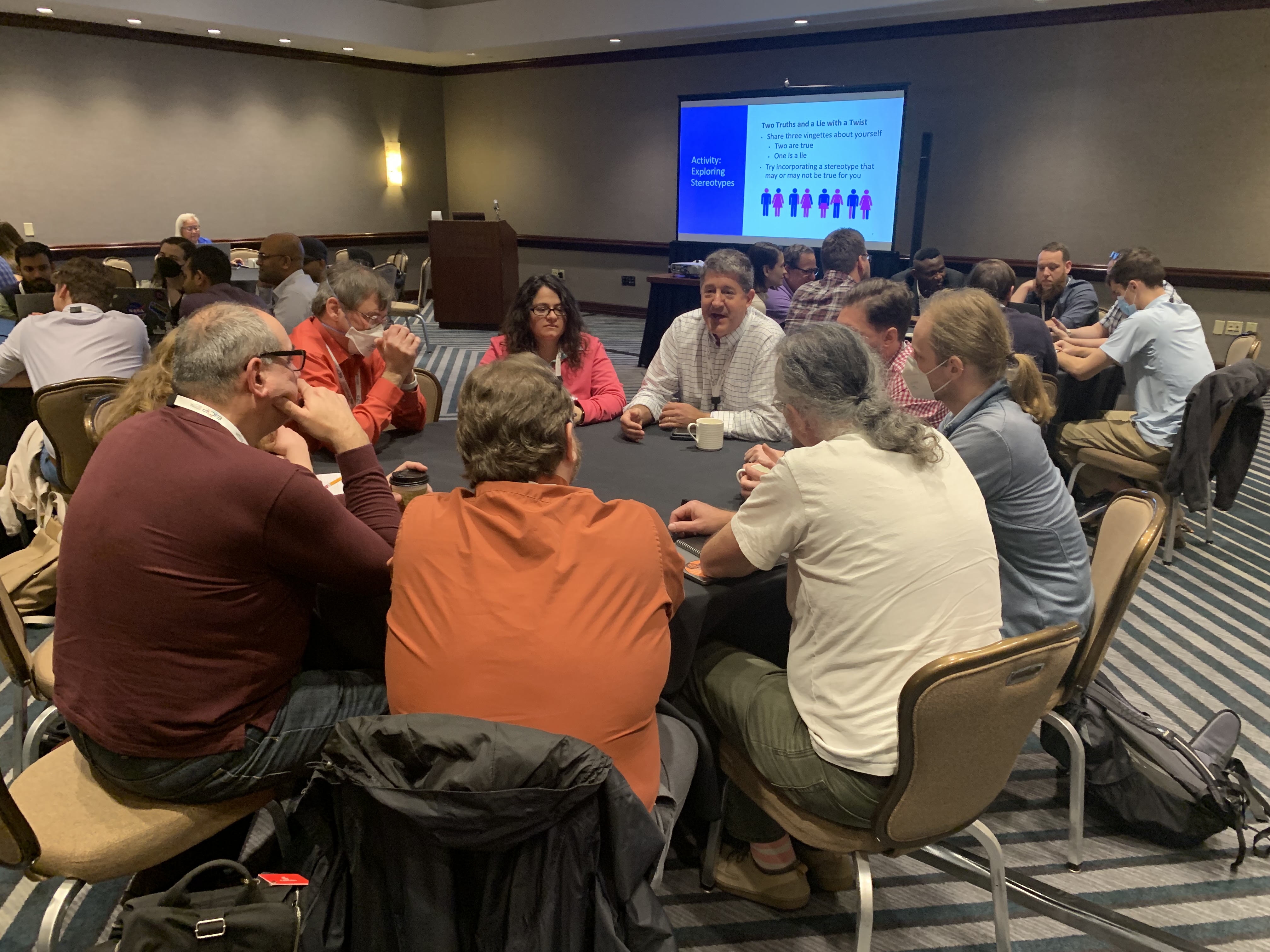Two Truths and a Lie

Keisha is at the podium in a packed room at the Exascale Computing Project annual meeting. She is brave, opening our CULTIVATE Conversations session by sharing her career and life experiences. She is the Program Director for Sustainable Horizons Institute (SHI), which works to catalyze the normalization of inclusion of diverse ideas and people in the STEM workforce. Keisha has twenty years’ experience working with underrepresented students, and she has faced her own struggles with discrimination as an African American.
Next, Mary Ann Leung, the founder of SHI, instructs us on how to cultivate conversations with each other. She tells us to divide into groups that each fill up large round tables in the room and asks us to team up with as many total strangers as we can. My table has a few computational scientists from the United Kingdom and some managers, scientists, and engineers from the U.S. National Labs. I am one of only two women at the table, and everyone is white. We have a good diversity of age and career stage, from postdoc to senior researcher. Other tables in the room have more cultural and national diversity.
There is a little nervous conversation as we begin. Mary Ann and Kiesha demonstrate how to play a game called two truths and a lie to help us start understanding each other. We are asked to do it in a way that challenges stereotypes. I begin for my table by stating my two truths and a lie: “1. I am an astrophysicist by training, who studied exploding stars. 2. I have just taken up ice skating with the goal of becoming a competitive ice skater 3. My last name is hyphenated, Parete, meaning “stone wall” in Italian and “Koon” from my husband, who is Korean.”
The other astrophysics at the table guesses that my first story is the lie, because he has not seen my papers or heard of me professionally. Since I have not published an astrophysics paper since 2012, this is a good guess, but I am indeed a person trained as an astrophysicist who made a switch to HPC engineering early in my career.
Someone else guesses that my story about ice skating is the lie. I am nearly 50, so it may seem like a surprising time of life to take up ice skating, but indeed, 50 is a fine time to do that if you respect the pacing set by your muscles, bones, and joints as you learn.
The group of collaborators from the United Kingdom guesses that option three is the lie because “Parete” is not the Italian word for “stone wall”, but rather “internal wall”. Well, indeed, they are right, that option three is the lie! However, since I am not a fluent Italian speaker and I am the third generation to be born in the U.S., I was not aware that I was lying about the particular kind of wall referred to by my family name. The lie that I intended to tell is that my husband is Korean. Koon is a common enough Asian last name, but my husband is not of Asian origins. It is interesting what we learn about our own stories when we open them to other people.
As we progress around the table, people pick out lies and truths. Everyone guesses that the postdoc’s claim of having four children is a lie, ostensibly because he is too young. We discuss that it is indeed possible to have four children or some equivalent family responsibility in early career stages, and sufficient family leave is something that enables retention of people in careers at all stages.
Another table explodes with excitement, so Keisha asks them to share what it is that they have just learned. At that table are three researchers who are much quicker and more accurate at detecting which of each other’s stories is a lie, but they have only just met today. They find out that they all grew up in Bangladesh, and as a result, they have a common understanding that allows them insight into each other’s stories that others at the table may not have.
We all bring our formative experiences with us to work, and there are aspects of projects that might seem easier when we work with people who share much of our formative background. However, we are building software, documentation, and science for, and with, people of many diverse formative backgrounds. Teams that seek to mindfully build a culture that relies on understanding one another as both professionals and people don’t need to rely on their members having a common background to have harmony. The specific process of building a team-wide culture of understanding may be different for different teams, but starting with conversations like the one we are practicing in our session and the intent to understand one another is a good beginning. Having a specified plan to build mutual understanding as a team forms and hires new members, can help teams more readily include members with diverse experiences and backgrounds.
We grow when we seek to understand why we think and react in the ways that we do, and when we make it a habit to understand others. This growth is what the CULTIVATE Conversations project hopes to spark.
Acknowledgments to Miranda Mundt, who helped me remember the session’s conversion and to Mary Ann Leung and Keisha Moore for cultivating the conversation.